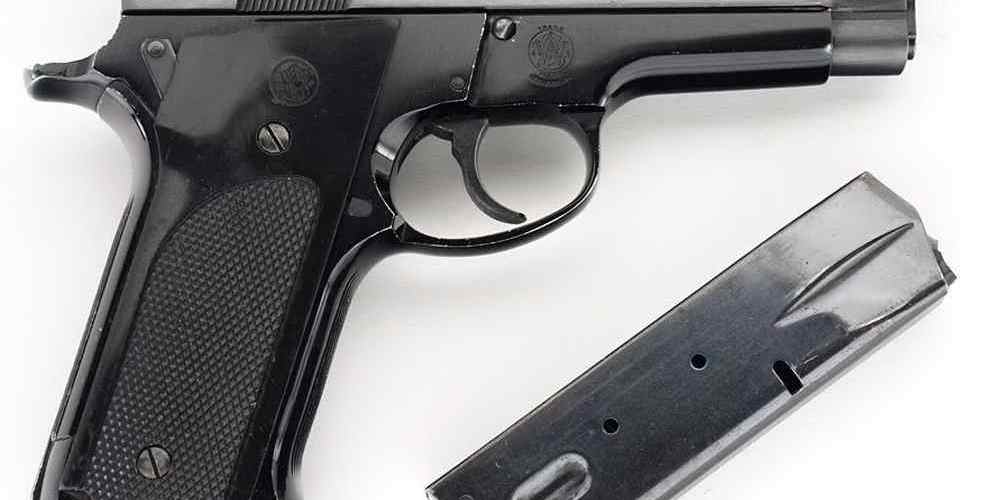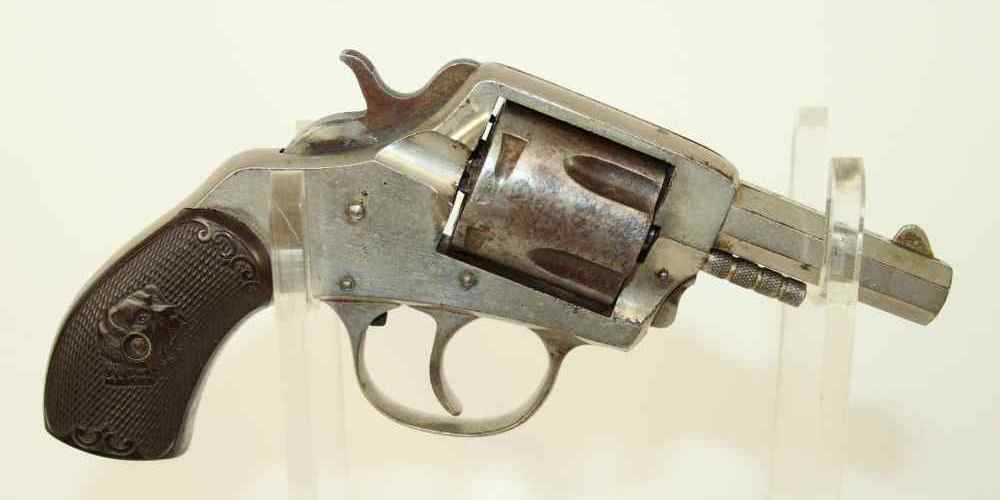Separating fact from fiction, one amendment at a time.
The Second Amendment Does Not Give Unlimited Gun Rights
The Second Amendment to the United States Constitution has been a topic of much debate and controversy in recent years. One of the most common misconceptions about the Second Amendment is that it gives individuals unlimited rights to own and carry firearms. However, this is not the case.
The Second Amendment states: “A well regulated Militia, being necessary to the security of a free State, the right of the people to keep and bear Arms, shall not be infringed.” This language has been interpreted in various ways over the years, but it is important to note that the right to bear arms is not without limitations.
One of the key limitations on the Second Amendment is the concept of “reasonable regulation.” This means that while individuals have the right to own firearms, the government also has the authority to regulate the ownership and use of firearms in order to protect public safety. This can include restrictions on who can own firearms, where they can be carried, and what types of firearms are allowed.
Another common myth about the Second Amendment is that it only applies to firearms for hunting and self-defense. While these are certainly important reasons for owning firearms, the Second Amendment was actually intended to ensure that citizens could defend themselves against a tyrannical government. This means that the right to bear arms extends beyond just hunting and self-defense to include the ability to resist government oppression.
It is also important to note that the Second Amendment is not absolute. Just as the First Amendment does not protect all forms of speech (such as hate speech or incitement to violence), the Second Amendment does not protect all forms of gun ownership. For example, individuals with a history of violence or mental illness may be prohibited from owning firearms, and certain types of firearms (such as fully automatic weapons) are heavily regulated or banned altogether.
In recent years, there has been a push for stricter gun control measures in response to mass shootings and other acts of gun violence. While some argue that these measures infringe on their Second Amendment rights, it is important to remember that the right to bear arms is not unlimited. Just as the government has the authority to regulate other rights (such as the right to free speech or the right to privacy), it also has the authority to regulate the right to bear arms in order to protect public safety.
In conclusion, the Second Amendment does not give individuals unlimited rights to own and carry firearms. The right to bear arms is subject to reasonable regulation in order to protect public safety and prevent gun violence. It is important to debunk the myths surrounding the Second Amendment and have a clear understanding of the limitations and responsibilities that come with the right to bear arms.
The Founding Fathers Did Not Intend for Citizens to Have Military-Grade Weapons
The Second Amendment of the United States Constitution has been a topic of much debate and controversy in recent years. One of the most common arguments made by gun rights advocates is that the Founding Fathers intended for citizens to have access to military-grade weapons. However, this argument is not supported by historical evidence.

When the Second Amendment was written in 1791, the Founding Fathers were primarily concerned with ensuring that the newly formed United States had a well-regulated militia. The language of the amendment itself reflects this concern, stating that “A well regulated Militia, being necessary to the security of a free State, the right of the people to keep and bear Arms, shall not be infringed.”
At the time the Second Amendment was written, the weapons available to civilians were vastly different from the military-grade weapons of today. The Founding Fathers were familiar with muskets and rifles, which were the standard firearms of the time. These weapons were slow to load and fire, and had limited range and accuracy compared to modern firearms.
In fact, the Founding Fathers were wary of standing armies and believed that a well-regulated militia composed of citizen-soldiers was the best defense against tyranny. They did not envision a scenario where individual citizens would need access to military-grade weapons to defend themselves against a tyrannical government.
Furthermore, the Supreme Court has consistently upheld restrictions on certain types of firearms, such as fully automatic weapons and sawed-off shotguns, which are considered military-grade weapons. In the 1939 case United States v. Miller, the Court ruled that the Second Amendment does not protect the right to possess a sawed-off shotgun because it is not a weapon typically used by militia members.
It is also worth noting that the Second Amendment is not unlimited in scope. The Supreme Court has recognized that the government has a legitimate interest in regulating firearms to protect public safety. In the 2008 case District of Columbia v. Heller, the Court held that the Second Amendment protects an individual’s right to possess a firearm for self-defense in the home, but also stated that this right is not absolute and can be subject to reasonable restrictions.
In conclusion, the idea that the Founding Fathers intended for citizens to have access to military-grade weapons is a myth that is not supported by historical evidence or legal precedent. The Second Amendment was written in the context of a different time and place, and its language reflects the Founding Fathers’ concerns about maintaining a well-regulated militia. While the right to bear arms is an important constitutional right, it is not unlimited, and the government has a legitimate interest in regulating firearms to protect public safety.
Gun Control Measures Are Constitutional and Supported by the Second Amendment
The Second Amendment of the United States Constitution has been a topic of much debate and controversy in recent years. Many people believe that the Second Amendment guarantees an individual’s right to own and bear arms without any restrictions. However, this is not entirely accurate. There are several myths surrounding the Second Amendment that need to be debunked in order to have a better understanding of the constitutional rights and responsibilities that come with gun ownership.
One of the most common myths about the Second Amendment is that it gives individuals an absolute right to own any type of firearm they choose. This is simply not true. The Supreme Court has ruled that the government has the authority to regulate firearms and impose restrictions on gun ownership. In fact, there are already several gun control measures in place that have been deemed constitutional by the courts.
For example, background checks are required for all gun purchases in the United States. This measure helps to prevent individuals with a history of violence or mental illness from obtaining firearms. Additionally, there are restrictions on the sale of certain types of firearms, such as fully automatic weapons and certain types of ammunition. These measures are in place to protect public safety and are supported by the Second Amendment.
Another myth about the Second Amendment is that it only applies to militias and not to individual citizens. While it is true that the Second Amendment was originally intended to protect the right of states to maintain militias, the Supreme Court has ruled that the Second Amendment also protects the individual right to own and bear arms. In the landmark case of District of Columbia v. Heller, the Supreme Court held that the Second Amendment protects an individual’s right to possess a firearm for self-defense in the home.
Some people also believe that the Second Amendment is an outdated provision that no longer has relevance in modern society. However, the right to bear arms is still considered a fundamental right in the United States. The Second Amendment was included in the Bill of Rights to ensure that individuals have the means to protect themselves and their families from harm. While the context in which the Second Amendment was written may have changed, the underlying principle of self-defense remains as important today as it was in the 18th century.
It is important to remember that the Second Amendment is not an unlimited right. The government has the authority to regulate firearms in order to protect public safety and prevent gun violence. Gun control measures such as background checks and restrictions on certain types of firearms are constitutional and supported by the Second Amendment. By debunking these myths and gaining a better understanding of the Second Amendment, we can have a more informed and productive discussion about gun rights and responsibilities in the United States.
The Second Amendment Does Not Protect Against All Forms of Gun Regulation
The Second Amendment to the United States Constitution has been a topic of much debate and controversy in recent years. Many people have strong opinions about what the amendment does and does not protect, leading to a number of myths and misconceptions about its scope and purpose. One common myth is that the Second Amendment protects against all forms of gun regulation. However, this is not entirely accurate.
While the Second Amendment does protect the right of individuals to keep and bear arms, it does not mean that this right is unlimited. The Supreme Court has recognized that the government has the authority to regulate firearms in certain ways, such as prohibiting felons and the mentally ill from owning guns, or restricting the sale of certain types of weapons. These regulations are seen as necessary to protect public safety and prevent gun violence.
Another myth about the Second Amendment is that it only applies to firearms that were in existence at the time the amendment was ratified in 1791. This is not true. The Supreme Court has held that the Second Amendment protects the right to own and use firearms that are commonly used for lawful purposes today, not just those that were available in the 18th century. This means that modern firearms, such as semi-automatic rifles and handguns, are also covered by the Second Amendment.
Some people also believe that the Second Amendment only applies to members of the military or law enforcement. However, the Supreme Court has made it clear that the right to keep and bear arms is an individual right that belongs to all Americans, not just those in uniform. This means that ordinary citizens have the right to own and use firearms for self-defense, hunting, and other lawful purposes.
One of the most persistent myths about the Second Amendment is that it is an absolute right that cannot be restricted in any way. This is simply not true. The Supreme Court has recognized that the government has the authority to regulate firearms in order to protect public safety and prevent gun violence. This includes laws that require background checks for gun buyers, restrict the sale of certain types of weapons, and prohibit certain individuals from owning guns.
In conclusion, the Second Amendment does not protect against all forms of gun regulation. While it does guarantee the right of individuals to keep and bear arms, this right is not unlimited. The government has the authority to regulate firearms in certain ways in order to protect public safety and prevent gun violence. It is important to separate fact from fiction when it comes to the Second Amendment, and to have a clear understanding of what the amendment does and does not protect.
The Second Amendment Has Been Interpreted and Applied Differently Throughout History
The Second Amendment to the United States Constitution has been a topic of much debate and controversy over the years. One of the main reasons for this is the fact that it has been interpreted and applied differently throughout history. Many myths and misconceptions have arisen as a result of these varying interpretations, so it is important to debunk some of these myths in order to gain a better understanding of the Second Amendment.
One common myth about the Second Amendment is that it guarantees an individual’s right to own firearms for any reason. While it is true that the Second Amendment does protect the right to bear arms, this right is not unlimited. The Supreme Court has ruled that certain restrictions on gun ownership are permissible, such as prohibiting felons and the mentally ill from owning firearms. Additionally, the government has the authority to regulate the types of firearms that can be owned, as well as where and how they can be carried.
Another myth about the Second Amendment is that it only applies to the militia. While the Second Amendment does mention the importance of a well-regulated militia, it also explicitly states that the right to bear arms shall not be infringed. This means that the right to own firearms is not dependent on membership in a militia, but is instead an individual right that is protected by the Constitution.
Some people believe that the Second Amendment only applies to the types of firearms that were in existence at the time it was written. This is simply not true. The Supreme Court has ruled that the Second Amendment protects the right to own modern firearms, such as handguns and rifles, in addition to the muskets and other weapons that were common at the time of the Founding Fathers.
One of the most persistent myths about the Second Amendment is that it is an absolute right that cannot be restricted in any way. This is not the case. The Supreme Court has held that certain restrictions on gun ownership are permissible, such as background checks and waiting periods. Additionally, the government has the authority to regulate the sale and possession of firearms in order to protect public safety.
It is important to understand the history and context of the Second Amendment in order to debunk these myths and misconceptions. The Second Amendment was written in a time when the United States was a young and vulnerable nation, and the Founding Fathers believed that an armed citizenry was necessary for the defense of the country. However, they also recognized the need for reasonable restrictions on gun ownership in order to prevent violence and protect public safety.
In conclusion, the Second Amendment has been interpreted and applied differently throughout history, leading to many myths and misconceptions about its meaning. By understanding the history and context of the Second Amendment, we can debunk these myths and gain a better understanding of the right to bear arms. It is important to recognize that the Second Amendment protects an individual right to own firearms, but that this right is not unlimited and can be subject to reasonable restrictions in order to protect public safety.




